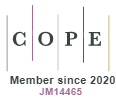Use of Artificial Intelligence (AI)
The use of Artificial Intelligence (AI) is prevalent and active in academic activities, necessitating the establishment of guidelines for its use in academic publications to maintain ethics, integrity, transparency, and publication quality. Despite the presence of AI, researchers should remain the primary protagonists.
The objective of these guidelines is to guide authors, reviewers, and researchers on the responsible and ethical use of AI tools in their publications. Authors and co-authors must take full responsibility for the content of their studies, including parts generated by AI tools.
Revista Thesis Juris emphasizes that authors should write from their own ideas, experiences, readings, and professional learning in a clear, cohesive manner; any deviation from this must be explicitly and transparently disclosed. We do not accept or publish documents authored solely by AI. The use of AI to fabricate or distort primary research data is unacceptable. AI tools do not meet authorship requirements as they cannot assume moral, legal responsibilities, manage copyrights, or handle conflicts of interest.
Following these guidelines is important to maintain the integrity and credibility of published research, as well as to contribute fairly and reliably to peers, science, and the population as a whole. The objective of the Guidelines is to ensure compliance with established ethical publication standards for the journals of the Portal of Journals UNINOVE (PPU), in alignment with recommendations from the Committee on Publication Ethics (COPE).
Authors and co-authors of articles are responsible for ensuring that:
- The content is original;
- There are no concerns about potential similarity leading to plagiarism or self-plagiarism;
- All relevant sources are cited;
- All statements in the article regarding hypotheses, interpretations, results, conclusions, limitations, and study implications represent the authors' and co-authors' own ideas;
- There is no misuse of images without proper legal rights.
Non-compliance with these Policy Guidelines will be considered falsification of methods, contributions, and results. The journal may notify the authors' institutions, co-authors, and reject, retract (post-publication), or publish an editorial notice about the article.
Examples of Permissions for AI Use
- Translation and Language Correction: AI tools are useful for translating texts into different languages and correcting grammar, punctuation, and style errors, especially for authors who are not native speakers of another language.
- Transcription: They can be used to transcribe interviews or spoken content.
- Programming Assistance: AI tools assist in correcting and adjusting programming commands.
- Research: They can serve as efficient search tools to gather relevant information and references.
These applications are considered supportive tools to increase productivity and ensure clarity and precision in academic writing. However, it is important that the use of such tools is transparently declared in the study.
Examples of Restrictions on AI Use
- Authorship: AI tools should not be credited as authors in academic articles. All content generated by AI must be attributed to a responsible human author.
- Content Creation: It is not allowed to use AI to generate significant parts of the study, such as developing arguments, conducting data analysis, or interpreting results.
- Data Analysis: Data analysis or interpretation of results should be performed by researchers and not by AI.
Security and Confidentiality (Peer Review)
Avoid including confidential data in AI tools, as some platforms may store and use such data. Maintaining the integrity and confidentiality of research data is very important. By following these guidelines, researchers can use AI tools appropriately, maintaining ethical standards and the integrity of academic publications. Reviewers should not use AI to issue their reviews. Any use of AI in the evaluation should be clearly disclosed in the evaluation form.
Statement of Use
When AI tools are used in research and in the preparation of the study, authors must explicitly declare their use. This statement should be included in the methodology section or in a similar section of the academic work, such as the Acknowledgments section for types of articles without a Methods section.
Specifically, authors must inform:
- Which AI tools were used: Include the version of the tools, as these may change rapidly in terms of scope and accuracy, and for what purpose they were employed.
- How the tools were used: Include details about prompts, context of use, and date.
Additionally, it is necessary to recognize and declare possible limitations and biases of the AI tools used. If the information is extensive, it is recommended to include only the essentials in the body of the text, referencing the complete content in an appendix.
References
COPE - Committee on Publication Ethics. Recuperado de https://publicationethics.org/cope-position-statements/ai-author
Instituto de Investigación en Ciencias de la Administración - Universidad Nacional Del Sur. Lineamientos de uso de inteligencia artificial generativa en trabajos académicos. Bahía Blanca - Argentina, 22 de mayo de 2024.
PLOS ONE. Ethical Publishing Practice: Artificial intelligence (AI) tools in peer review. Recupeado de https://journals.plos.org/plosone/s/ethical-publishing-practice#loc-ethical-peer-review
PLOS ONE. Ethical Publishing Practice: Artificial Intelligence Tools and Technologies. Recupeado de https://journals.plos.org/plosone/s/ethical-publishing-practice#loc-ethical-peer-review
Taylor & Francis. (2023). Taylor & Francis Clarifies the Responsible use of AI Tools in Academic Content Creation. Recuperado de https://newsroom.taylorandfrancisgroup.com/taylor-francis-clarifies-the-responsible-use-of-ai-tools-in-academic-content-creation/


